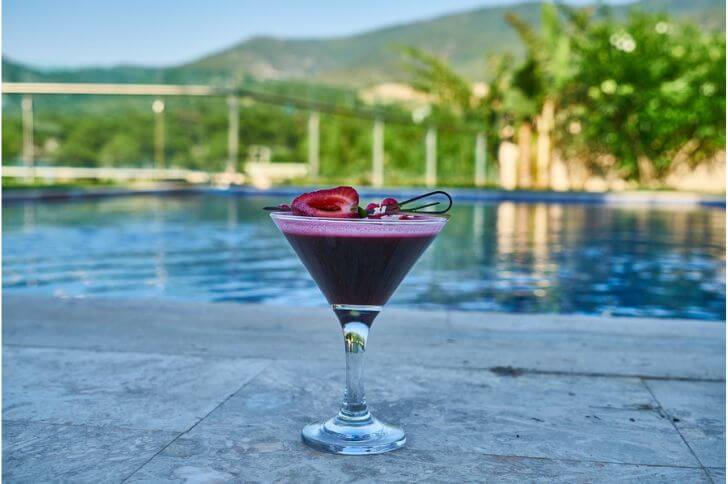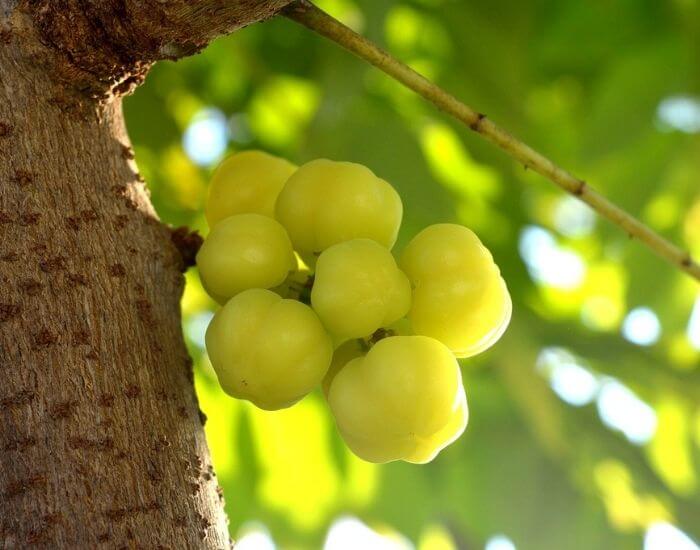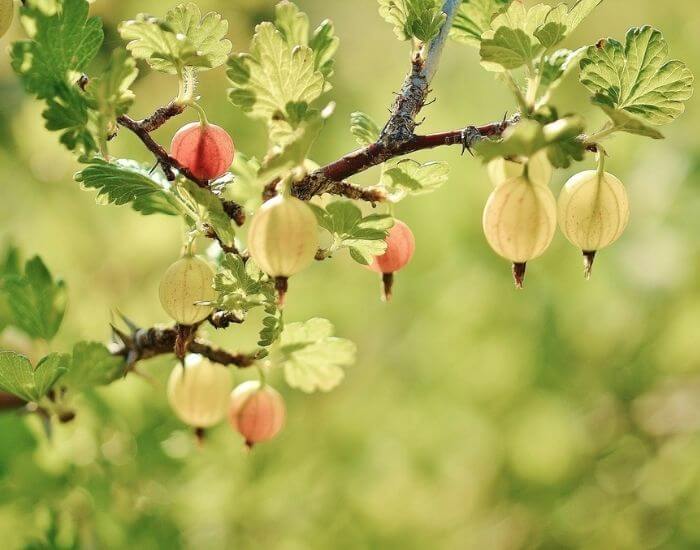Cassis fruit, commonly called blackcurrant, is a small but mighty berry that has captivated the culinary world for centuries.
With its distinctive deep purple color and intense flavor, this fruit offers a unique sensory experience that delights the taste buds and adds a burst of vibrant color to dishes.
But it’s not just its aesthetic appeal that makes cassis fruit special – packed with an abundance of essential nutrients, this humble berry has been hailed as a superfood with numerous benefits.
Cassis Cultivation
Cultivation involves specific techniques and considerations to ensure optimal growth and yield. This fruit is typically grown in temperate regions with cool summers.
Cassis plants thrive in well-drained soil that is rich in organic matter. Prior to planting, the soil should be prepared by removing any weeds or debris and adding compost or manure for added nutrients.
When it comes to propagation, cassis can be grown from seeds or cuttings. However, using cuttings tends to be more common as it allows for better control over the quality of the resulting plants.
Cuttings are usually taken during late autumn or early winter when the plant is dormant. These cuttings are then planted into a nursery bed or pots filled with a suitable growing medium.
Cassis fruit color
The color of cassis fruit comes from a group of pigments called anthocyanins, which are responsible for the red, blue, and purple colors found in many fruits and vegetables.
How to tell if black currant berry is ripe
To determine if cassis fruit is ripe, there are a few key indicators to look out for. Firstly, check the color of the berries. Ripe cassis berries should have a deep, dark purple hue.
Avoid picking them when they are still green or red, as these are signs that they are not fully matured.
Another way to assess ripeness is by gently squeezing the berries between your fingers. Ripe cassis fruit will be firm but slightly soft to the touch.
Lastly, pay attention to the aroma. When fully ripe, these berries emit a sweet and fragrant smell.
Where does cassis come from?
It is believed this dark berry originated in the northern regions of Europe, such as Scandinavia and Russia. However, it has been cultivated and grown in various other countries around the world for centuries.
Historically, cassis fruit has been a popular crop in countries like France and England. In fact, blackcurrant cultivation dates back to the 17th century in England.
Today, France is one of the largest producers of blackcurrant fruit and its products such as liqueurs and syrups.
Apart from Europe, cassis fruit can also be found growing in regions like North America and New Zealand. In North America, it is mainly grown in states such as Oregon and New York due to its cooler climate requirements.
Similarly, New Zealand has become a significant producer of cassis fruit since its introduction there in the early 20th century.
Nutritional facts
These berries are low in calories and fat but high in essential nutrients, making them an excellent addition to a healthy diet. For instance, this fruit contains high levels of vitamin C.
Furthermore, it is also rich in antioxidants.
Season
When is cassis fruit in season? The fruit typically ripens during the summer months, with the peak season falling between June and August in many regions.
During this time, cassis bushes are adorned with clusters of small dark berries that are bursting with flavor.
The warm temperatures and longer daylight hours provide ideal conditions for the fruit to mature fully and develop its distinctive taste.
It is important to note that the exact timing of the cassis harvest may vary depending on geographical location, climate conditions, and specific cultivars.
Taste:
What does cassis fruit taste like? Blackcurrant berry has a unique flavor profile. When bitten into, the initial taste is often described as bold and tart.
Its flavor can be likened to a combination of rich blackberries and tangy raspberries with a hint of citrus undertones. The intense acidity gives cassis fruit its distinctive sharpness that adds depth to its overall taste.
However, beneath the initial tartness lies an underlying sweetness that balances out the flavor profile.
As you continue to savor the fruit, you may notice subtle notes of sweetness that provide a pleasant contrast to the initial tanginess. This delicate balance between tartness and sweetness makes cassis fruit an excellent choice for various culinary applications.
Eating:
There are several delicious ways to incorporate this nutritious fruit into your diet. One simple method is consuming them raw. Just clean and eat.
For those who enjoy baking, cassis fruit can be used in various recipes too. You can make delectable pies, tarts, or cakes by incorporating these berries into the batter or using them as a filling.
Their slightly acidic taste adds an interesting twist to traditional desserts like cheesecake or bread pudding.
Additionally, cassis fruit makes for an excellent ingredient in jams and jellies due to its natural pectin content that helps achieve the desired consistency without added thickeners.
Blackcurrant Cake:

Ingredients:
-2 cups all-purpose flour
– 1 cup blackcurrants
– 1 cup sugar
– 1/2 cup butter, softened
– 1/2 cup milk
– 2 eggs
– 1 teaspoon vanilla extract
– 1 teaspoon baking powder
Instructions:
- Preheat oven to 350°F (175°C) and grease a round cake pan.
- In a bowl, cream together butter and sugar until light and fluffy.
- Add in eggs one at a time, then stir in vanilla extract.
- In another bowl, combine flour and baking powder.
- Gradually add the dry ingredients to the butter mixture, alternating with milk.
- Gently fold in blackcurrants.
- Pour batter into the prepared cake pan and smooth the top.
- Bake for approximately 40 minutes or until a toothpick inserted into the center comes out clean.
- Allow the cake to cool before serving. Enjoy!
Cassis Ice Cream
Ingredients:
-2 cups cassis fruit
– 1 cup sugar
– 2 cups heavy cream
– 1 teaspoon vanilla extract
Instructions:
- In a saucepan, combine the cassis fruits and sugar. Cook over medium heat until the blackcurrants release their juices and the sugar dissolves.
- Remove from heat and let the mixture cool completely.
- In a separate bowl, whip the heavy cream until soft peaks form.
- Gently fold in the cooled cassis mixture and vanilla extract into the whipped cream.
- Pour the mixture into an ice cream maker and churn according to manufacturer’s instructions.
- Transfer the churned ice cream to a container and freeze for at least 3 hours before serving.
- Enjoy your homemade blackcurrant ice cream!
Cassis jam:
: Ingredients:
-2 pounds of blackcurrants
– 2 cups of granulated sugar
– Juice of 1 lemon
Instructions:
- Wash and remove any stems from the blackcurrants.
- In a large pot, combine the blackcurrants, sugar, and lemon juice.
- Cook over medium heat, stirring occasionally until the sugar has dissolved.
- Increase the heat to high and bring the mixture to a boil.
- Reduce heat to low and simmer for about 30 minutes or until the jam thickens.
- Remove from heat and let it cool slightly before transferring to sterilized jars.
- Seal tightly and store in a cool place until ready to use or give as gifts!
Related Read: Learn about the nispero fruit
Drinking

One popular way to drink cassis fruit is by making a refreshing cassis cocktail.
Mix cassis liqueur with your choice of spirits like vodka or champagne for a delightful and colorful drink. Add some ice cubes, a squeeze of fresh lemon juice, and top it off with soda water for a sparkling cassis spritzer.
Another fantastic way to enjoy the flavors of cassis fruit is by infusing it into homemade syrups or cordials.
Simply simmer fresh or frozen cassis berries with sugar and water until the mixture thickens into a syrup-like consistency.
This homemade cassis syrup can then be used to flavor beverages like lemonades, iced teas, or even drizzled over desserts like ice cream or pancakes for an extra fruity twist.
For those who prefer non-alcoholic options, consider incorporating cassis fruit into mocktails or smoothies.
Blend together frozen bananas, berries of your choice, yogurt, and a splash of cranberry juice along with some fresh or frozen cassis berries for a nutritious and delicious smoothie packed with antioxidants from the vibrant blackcurrants.
You can also drink blackcurrants in the form of tea.
Storage:
To ensure the longevity and freshness of this vibrant fruit, proper storage techniques are essential. One option is to refrigerate cassis fruit by placing it in a perforated plastic bag or an open container in the refrigerator’s crisper drawer.
Another effective way to store cassis fruit is by freezing it.
Where can you get cassis
In Europe, cassis fruit is commonly grown in countries like France, Germany, and Poland. France, specifically the region of Burgundy, is well-known for its production of cassis liqueur made from these berries.
In North America, cassis fruit can be found in certain regions of Canada and the United States. Canada is one of the largest producers of blackcurrants on this continent and has a significant industry that focuses on growing these berries for various purposes including desserts, beverages, and even supplements.
Overall, if you are looking to purchase or enjoy blackcurrant products like jams or juices made from these berries, you can typically find them in regions where they are cultivated such as France, Canada, New Zealand or specialty stores that import them from these areas.
Cassis fruit vs raisin
Cassis fruits and raisins are two entirely different fruits, often confused due to their similar appearance. While raisins are dried grapes, blackcurrants belong to the Ribes genus and are small, round berries.
Their rich purple color and tangy flavor set them apart from raisins, which have a wrinkled texture and a much sweeter taste.
One of the main reasons for this misconception is that both blackcurrants and raisins are commonly used in baking and cooking.
However, substituting one for the other can significantly alter a recipe’s taste and texture. For example, using cassis fruits instead of raisins in a muffin recipe would result in a more tart flavor profile rather than the expected sweetness provided by raisins.
Cassis fruit vs blueberry
When it comes to small, juicy fruits bursting with flavor, blackcurrants and blueberries often come to mind. However, despite their similar appearance, these two fruits are actually quite distinct.
Firstly, cassis fruits (Ribes nigrum) belong to the Grossulariaceae family while blueberries (Vaccinium spp.) belong to the Ericaceae family. This difference in family indicates that they are not closely related species.
Furthermore, cassis fruits and blueberries differ in terms of taste and texture. Blackcurrants have a unique tartness that sets them apart from blueberries’ subtle sweetness.
Additionally, their textures vary greatly; blackcurrants possess a firm skin with soft flesh inside while blueberries boast a delicate skin and slightly crunchy texture when bitten into.
sources:
Hi There,
My name is Jenny. I’m the Chief Editor at Try Green Recipes and besides making yummy and healthy foods for my kids, grandkids, and friends. I’m new to the blogging world but I believe what I have to share is unique and will bring joy to your home. If you are adventurous and want try something tasty, let’s get started.

